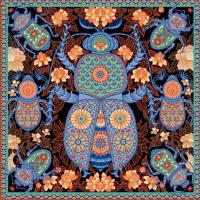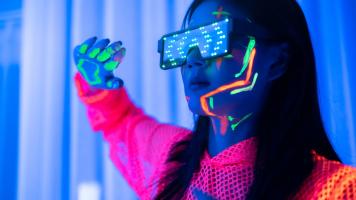From Pixels to Planet: The Role of AI Art in Shaping a Sustainable Future

Chief Storyteller, MeshMinds

Chief Connecting Officer, MeshMinds
Pixel Planet. Illustration courtesy of MeshMinds.
Generative AI is emerging as a powerful tool to raise awareness, but there should be guidelines to ensure benefits and avoid potential harm.
This article is published in collaboration with The MeshMinds Foundation.
As the digital revolution gains momentum over the past decade, a new phenomenon has captured the world's attention: the explosive growth of generative artificial intelligence (AI). The onset of the COVID-19 pandemic prompted much of the world to transition to the digital sphere, expediting a technological metamorphosis that has already been unfolding over several decades. Artists have been using AI to produce art since the late 1960s, but only recently, with the explosion of new tools such as DALL-E, Midjourney, and Adobe Firefly has the interest in AI art reached fever pitch.
The implications for artists and their artworks are profound, revolutionizing the way we perceive, experience, and even feel data. It also challenges our perceptions of reality, pushing the boundaries of what is imaginable and achievable.
Ushering in a new era of artistic exploration and expression
From raising awareness about pressing issues to communicating complex ideas, the marriage of AI and creativity has ushered in a new era of artistic exploration and expression.
With the ability to create visually stunning and immersive art experiences, digital artists can create engaging and interactive artworks that allow for active participation from the audience. This can be helpful in establishing empathy and connection with the concepts and issues being highlighted by the artist. Behavioral science studies show that with increased empathy, people are more likely to take action. As our world grapples with environmental and economic challenges, digital art is emerging as a powerful tool to raise awareness and spark change.
For example, AI art can help digital artists create data visualizations that make complex information more accessible and understandable to a wider audience. This can be particularly useful in raising awareness about environmental issues such as climate change, where scientific and research data can be visualized to help illustrate the scale and urgency of the problem. More importantly, as generative art is often created using data and algorithms that can generate outcomes based on certain parameters and rules, a sense of collaboration between the artist and the audience can be formed as the audience can become co-creators of the artwork. This does not only allow for a sense of ownership among the audience, but also allows for their direct representation.
Refik Anadol, a media artist and designer known for his work in the field of immersive media art, is among those who have experimented with AI and machine learning algorithms to generate large-scale public art installations that explore the relationship between humans and machines.
In his artwork, Melting Memories (2018), Anadol conducted experiments at the Neuroscape Laboratory at the University of California, where he gathered neural mechanisms of cognitive control using an EEG (electroencephalogram) that measured brain wave activity. This data served as the foundation for the algorithms necessary to develop a dynamic visual experience that reflected the participants’ long-term memories.
In June 2023, Anadol showcased Glacier Dreams, projecting it onto the exterior façade of the ArtScience Museum during iLight Singapore. Commissioned by Swiss wealth manager Julius Baer, Glacier Dreams marks the first chapter of an ongoing collaboration for NEXT, an initiative designed to encourage interdisciplinary exploration of megatrends across the arts, science, and technology.
Glacier Dreams is inspired by the beauty and fragility of glaciers resulting from a long-term research project at the intersection of multisensory new media art, machine learning, and environmental studies. It utilizes over 100 million visual materials from online and institutional archives along with an additional dataset of more than 10 million glacier visuals collected by Anadol in Iceland, Greenland, and Antarctica. The experience serves to raise awareness about climate change and rising sea levels.
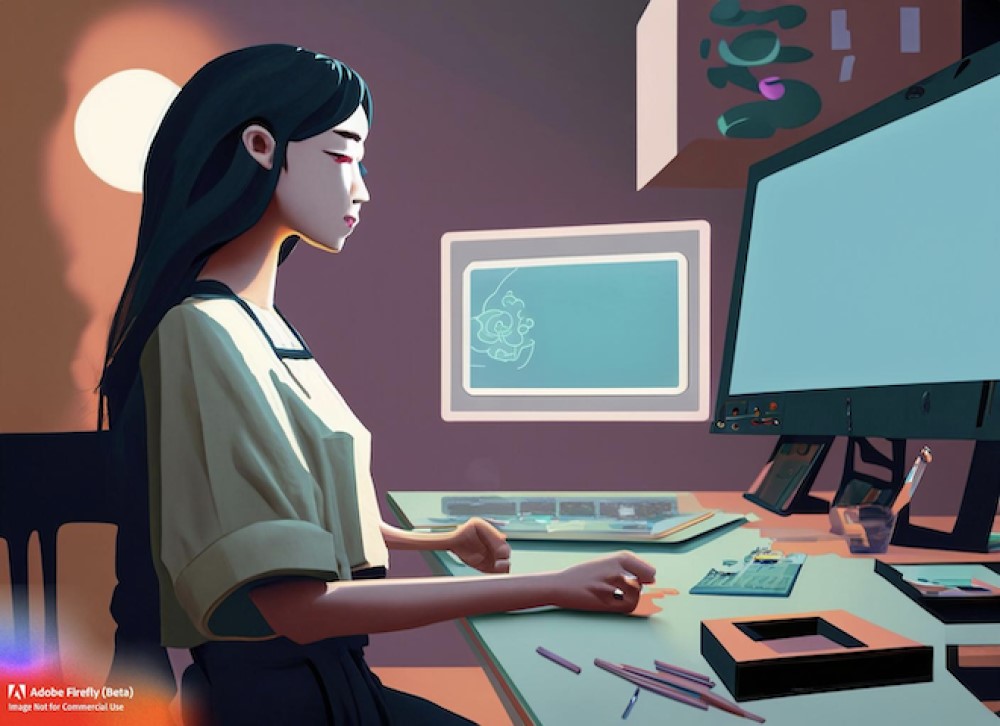
With the ongoing integration of AI into multiple existing and emerging programs and apps, this has illustrated, once again, the discussion around the relationship between humans and technology. Is it a reciprocal relationship in which society drives technological change, while changing technologies in turn shape society? Or is it one which involves clear and present danger to society, as warned by Geoffrey Hinton, the "godfather of AI," while he laments his participation and foundational contributions to the field?
From our perspective, AI is a simulation of human intelligence by machines. AI systems function by absorbing information tagged by an army of human content moderators, looking for connections and trends within it, and using these findings to guess what might happen next. It is an incredibly powerful tool that can be used as a way of solving problems and enhancing human life, if used ethically. Like any new technology, it is up to society, with the help of regulators, to steer the use of this tool in a direction that is more beneficial rather than harmful. Ignoring digital technology and AI would mean ignoring the opportunities that they provide.
Connecting humans, nature, and technology
Amid concerns over generative AI though, there are initiatives like the Julius Baer Next Generation Art Prize, which celebrates the rise of this art form. The art prize provides a first-of-its-kind platform for digital artists from India, the People's Republic of China, and Southeast Asia to develop new digital artworks with guidance from experts in the field of art and technology. The artworks are inspired by themes, such as digital disruption, future cities, and sustainability. These themes are predicted to be the drivers and megatrends that are affecting every aspect of our lives now and in the future.
Three of the winning artists using generative AI and machine learning in their creative process have sparked conversations at the intersection of culture, environment, and human connections with technology and each other.
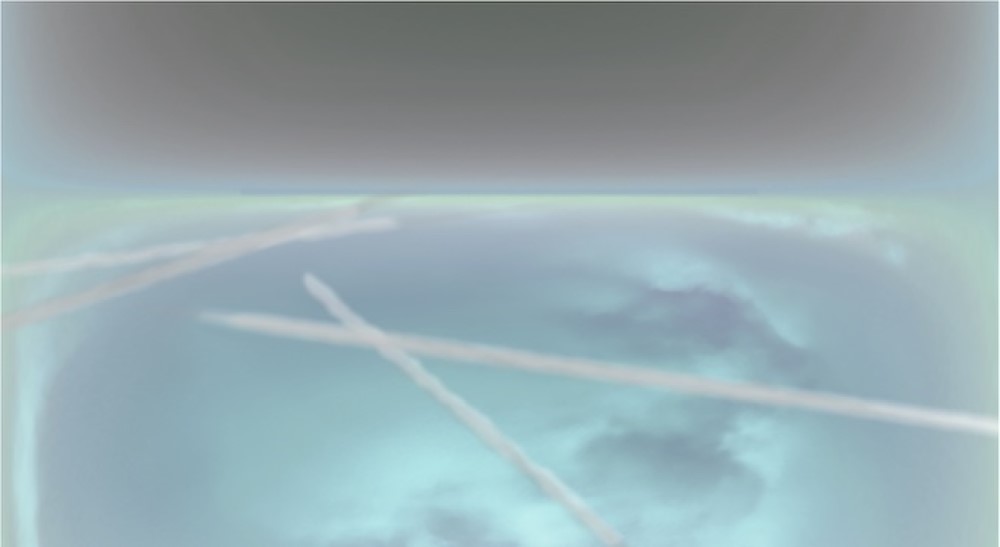
Carla Chan. A digital artist from Hong Kong, China, Carla Chan focuses on computational processes and new technology to blend physical and digital elements into a hybrid form of materiality. Her work, Traces of Space Beyond, is an ever-evolving and forever-changing visual experience driven constantly by using weather, demographic, and flight data.
The artwork features a virtual sky that illustrates real-time weather data through generative art, creating a space for contemplating the relationship between human activities, nature, and technology.
Natalie Wong. Natalie Wong is a mixed-media artist from Hong Kong, China. In her artwork, Algorithm Actually, Wong analyzed and curated data from an individual's dating app and visually illustrated the prevailing patterns of language used during human interaction within contemporary dating settings. These language patterns were then remapped into generative dynamic digital forms. This interactive and generative artwork offers commentary on the themes of self-presentation in today’s digital landscape and explores the use of algorithms in connecting people.
"Technology and digital innovation have massive ongoing effects on how we live, work, think and connect with each other and evolve as a global community. I’ve always been interested in changing cultural behaviors and things that stimulate and spark that change,” she says of Algorithm Actually.
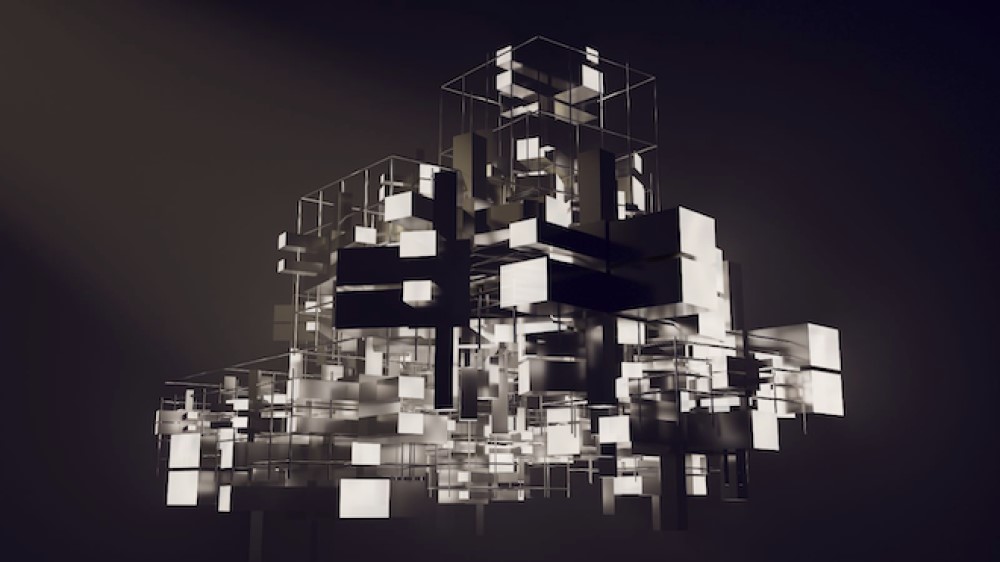
Chan Wan Kyn. Digital artist Chan Wan Kyn is from Singapore. His artwork, City in Aether, acts as a living, breathing representation of the ever-evolving nature of cities and our experiences in cities. The city he formulates in his artwork is a combination of contributed data from places visited by his peers and personal network. “Cities are not just physical spaces, but a reflection of our collective culture and values. I aim to find more novel and unique ways to express the harmony of tech and human experience through hybrid 'phygital' experimental and documentative art,” he says.
Conceptually, Chan aims to co-create the cities of the future through technology and attempts to imagine the vast possibilities of collaboration. He purposefully leaves a hint of incompleteness in his work to suggest that the landscape of the future has yet to be determined as each of us has a part to play in shaping the future with and through technology.
The Julius Baer Next Generation Art Prize showcases the work of talented digital artists who use technology to create immersive and interactive experiences that engage and inspire viewers to take action toward a sustainable future. Through their artwork, Carla Chan, Natalie Wong, and Chan Wan Kyn demonstrate how digital art mixed with AI can be used to visualize complex data and phenomena in innovative and thought-provoking ways. Their work challenges us to reflect on the dynamic connection between humans, nature, and technology, and to imagine new possibilities for co-creating a better world.
Digital art is rapidly emerging as a powerful tool for raising awareness about pressing environmental and social issues. The integration of AI has amplified the possibilities of this dynamic medium. By leveraging AI technologies in their work, artists are able to ignite conversations and provoke action. However, it is important to approach this technology with caution and ensure that its application aligns with ethical principles and human values. As with any new technology, the responsibility lies with society, working hand-in-hand with regulators, to guide the use of this tool in a direction that maximizes its benefits while minimizing potential harm. It is through thoughtful consideration, collaboration, and ethical practices that we can harness the power of digital art and AI to create a better future for all.

Justinne Alethea Casuga
Chief Storyteller, MeshMindsAs chief storyteller at MeshMinds, Justinne Alethea Casuga believes in the power of narratives to drive empathy, inspire action and foster a positive impact for people and the planet. Her interests in art, design, and technology has led her to explore the exciting realm of digital storytelling to engage audiences in new and meaningful ways.

Kay Poh Gek Vasey
Chief Connecting Officer, MeshMindsKay Poh Gek Vasey is the chief connecting officer at MeshMinds, which operates as a creative technology studio. Vasey offers expertise and advocacy on XR creation and production, metaverse pedagogy, digital sustainability, digital transformation, and the future of art and creativity. She believes in the power of artists to inform conversations and inspire positive actions that result in measurable impact for a better world. She is also founder of MeshMinds Foundation.

MeshMinds
MeshMinds is a nonprofit foundation and creative technology studio that invests in games for good. We connect impact artists, tech for good developers, and sustainability advocates. Together, we build immersive and interactive experiences that encourage digital youth to learn through play and effect real-world impact that supports the sustainable development of people and our planet.

